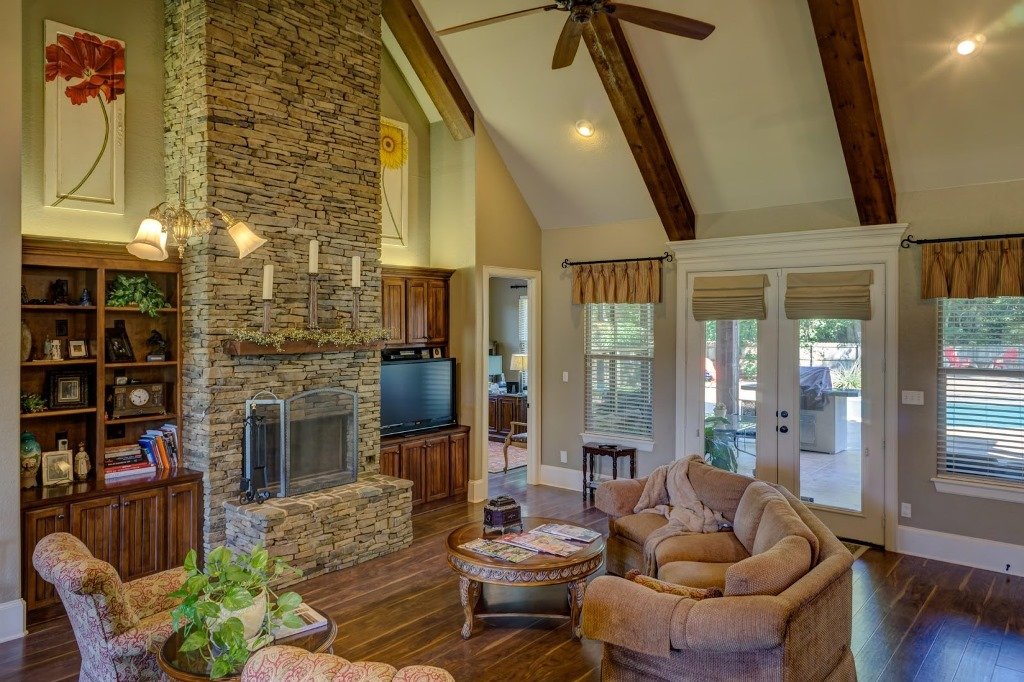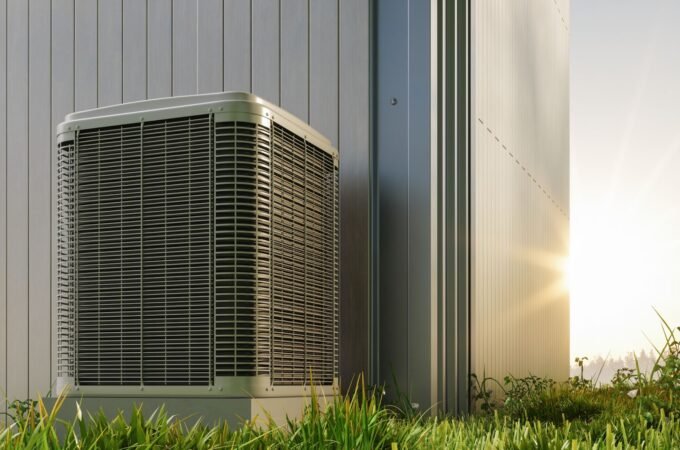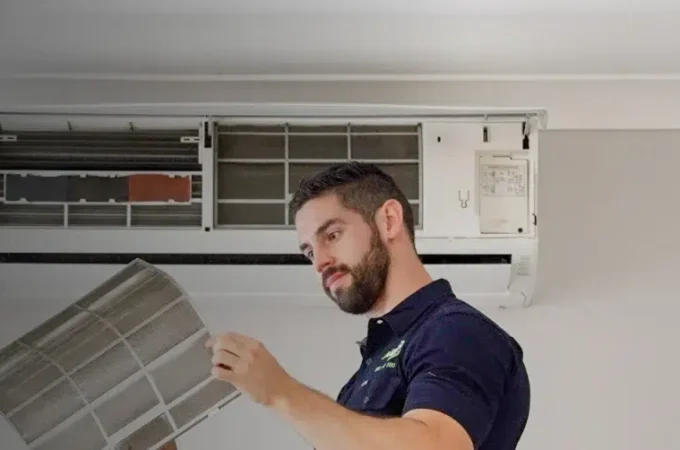
How to Design and Build an Stunning Stone Fireplace for Your Home
The stone fireplace was the focal point of homes before stone fireplaces became fashionable. Fireplaces were essential in early European and American homes, needed for heating homes during harsh winters and cooking food year-round.
Today stone fireplaces create nostalgia and a warm aesthetic not to mention a physically warm environment. Heat radiates off the warm stones as flames lick the inside of the fireplace.
Create an inner sanctuary in your home with a indoor fireplace. Here’s your guide to building and designing this beautiful focal point.
The Inner Workings

The inner design is the first place you need to care about. The inside of your fireplace has three components:
- Firebox: where the fire burns.
- Smoke shelf: the area above the firebox that is hidden.
- Flue: the rea that rises above the fireplace and guides smoke through the roof.
When we think of fireplaces, we often think of their aesthetics. We picture an earthy, stone exterior with a chunky mantel that holds the pictures or momentous of the life we’ve lived.
But if you do not pay attention to the inner workings of the fireplace, you’ll end up with something that looks nice on the outside but has no warming function. Improperly done, a fireplace can send smoke billowing into your living area, rending the fireplace useless.
Here are a few basic guidelines when you consider building your fireplace from the inside out:
- The sides of your fireplace must be narrower toward the back than the front. They must pinch in toward the back, creating a narrower back.
- The back wall needs to extend straight up for the first twelve inches.
- The back wall needs to slope in for the rest of the height of the fireplace.
Firebox
Firebox size matters. The wrong size can cause smoke and gases to drift into your home.
The depth of your firebox does not include your brick thickness. So as you measure out the firebox, do not consider your bricks.
Your firebox depth can vary from 16 inches to 18 inches depending on the height and width of your fireplace opening. If your opening width is larger than 42 inches, you will need an 18-inch firebox. Otherwise, 16 inches should be fine.
Flue Size
If you want to properly size your flue, you need to use a nomograph or an alignment chart. If the nomograph indicates you have two choices, pick the smaller of the two. Be aware that a smaller flue size will require you to raise the height of your chimney since taller chimneys tend to pull smoke out better than shorter chimneys when you have the same flue size.
Your flue size will vary from 8 x 12 inches to 16 x 16 inches.
Smoke Chamber
Your smoke chamber height and design matter the most when you’re designing your fireplace. No one can see this space from the outside of the fireplace. However, when you do not design the smoke shelf properly, your fireplace will not work properly.
The smoke chamber is above the damper. Your damper should not be less than eight inches above the top of the fireplace opening. If your damper is any lower, you will have smoke in your house.
Smoke Shelf

The smoke shelf exists for one of two reasons: it gives a chimney sweep a place to work from when he’s cleaning big chimneys, and it reflects downdrafts. Regardless of its function, when you design the smoke shelf, make sure it has uniform airflow. It should be right under the flue and level with the damper.
Some fireplaces do not have a smoke shelf. Instead, they have a streamline effect. The contractor will align the flue tile vertically with the top of the last line of bricks on the firebox wall.
Structure Matters
Wind and seismic loads affect the longevity of a fireplace. When you build your fireplace, you need to make sure it is structurally sound and able to withstand the high wind or seismic activity of your environment. You may need to use both horizontal and vertical reinforcement.
When you reinforce your fireplace vertically, at a minimum you must reinforcements on the corners of the fireplace. You must anchor the reinforcement to the foundation and properly lap it to create adequate stability. The lapping must be continuous for the entire height of the chimney.
The logistics of your reinforcements will depend on several factors:
- Overall dimensions of your chimney and fireplace
- Design loads
- Means of attaching the reinforcement to the structure
- The location of the reinforcement
Local building codes will tell you what you must do to properly reinforce your stone fireplace. Always consult the building codes to make sure you have a fireplace that will last.
Stone Fireplace Aesthetics
While the internal workings of the fireplace are essential for a successful warming unit, the aesthetics make the fireplace worth the cost and effort. They create the ambiance to the room that you’re looking for.
When you build a fireplace, you must make a handful of decisions that affect the quality and look of the fireplace. If you’ve decided on a stone fireplace, you’ve already made the biggest decisions of what material you will use for the fireplace.
The design of your fireplace depends on both the style of your house and the style of the room.
Here are a few essential design decisions you must make when you build a stone fireplace:
Design
When you’re considering fireplace designs, consider the look of your room. Do you want your fireplace to be the focal point of the room? It inevitably will be what people gather around on cold days to warm their chilled fingers, so make your decisions carefully.
You will have the option of having the fireplace and chimney visible to the ceiling of the room. This design draws the eye up, lengthening the room.
You can also have the stone of the fireplace surround stop at the mantel, creating a more abrupt look down toward the fire itself.

You also have the choice of a simple or ornate fireplace surround. A simple fireplace would be a rectangular opening that has stone surrounding it on a wall with nothing on it otherwise. A more ornate fireplace will have stone filling the entire wall, creating a focal point for the room.
Consider the fireplace systems available as well. While a gas system may seem convenient, it does not carry the aesthetics of a wood-burning fireplace. The wood-burning fireplace creates dry heat and an earthy smell.
Mantel
The mantel is the shelf above the fireplace. It faces out and creates a place for showpieces in your home. The choices for your fireplace mantels vary as much as the choices for fireplaces.
You can choose to have a chunky wood mantel that you have stained or painted to match the room. You could also incorporate a stone mantel that stretches out from the fireplace, creating a seamless stream for the eyes.
Not all mantels project out from the wall. Some are recessed into the wall, creating a smooth look from the fireplace to the wall above it.
Other mantels project. Projecting mantels can be made of masonry, stone, wood, or just about any other material. If you choose a combustible material, the mantel must be at least six inches away from any fireplace opening. It also must project out more than 1 1/12 inches.
Mantels are one more place where you can add personal touches to the fireplace. Some people opt for unique, hand-carved mantels. Others do not want the projecting lip of the mantel, believing it is a distraction from the fireplace itself.
If you have children, you may want to consider the uses of a mantel at Christmas time. After all, where will you hang the stockings for Santa?
Your fireplace dimensions ultimately determine the size of your mantel, so keep those dimensions in mind when you’re dreaming of that perfect fireplace topper.
Screen
Fireplace screens are screens placed in front of the fireplace to prevent any unwanted sparks from flying out of the fireplace. We’d like to believe this never happens, but truthfully, the wood you select does not always behave in a picture-perfect manner.
The screen also is a soft barrier between objects or people that may fall toward the fireplace.
Screens also add to the aesthetics of the fireplace. A free-standing, multi-folding screen stands in front of the fire and reaches as high as the fireplace opening. Some fireplaces come with a sliding screen or a metal curtain of sorts that protect the property and people around the fire.
Doors
Fireplace doors have these same functions as a screen but create a more sound barrier. Often the doors are made of glass, so you can still see the fire but do not have to worry about it breaking the invisible wall between the fireplace opening and the room where the fireplace is.
Practice caution if you have children and fireplace doors. We always teach our children to not touch the fire, but not many know they should not touch the glass door. The door gets extremely hot and can burn fingers and hands severely.
Functionality
If you’re looking for more than just eye candy for your living room, a fireplace can provide some functional needs as well.
For example, you can incorporate seating into the fireplace surround with a stone seat extending from the fireplace surround. You can also have wood storage build into the fireplace design.
Built-in storage will prevent you from constantly leaving the room to get another log. You also do not have to figure out where you’ll put a firewood holder in your living room because the wood storage is already there.
Energy Efficiency
Several factors play into creating the most energy-efficient stone fireplace. You’ve already made a great choice with stone. Stone will store and then radiate heat, helping the heat to last longer in a cold room.
The following elements help increase the energy efficiency of your fireplace:
- Location: Put your fireplace in a central location of the home. This will allow the fireplace to heat as much of the home as possible. When you use a stone or brick fireplace surround, the materials will store and then radiate the heat into other rooms even after you’ve put the fire out.
- Circulation: Install a fan in the fireplace to help circulate the heat. A fan will maximize the heat-making effect of your fireplace.
- Outside air: You can also increase energy efficiency by using outside air. You need to use your air intake, passageway, and inlet purposefully to bring in the outside air.
- Inlet: The inlet is the device that brings outside air into your firebox. It is located on the sides or on the floor of a combustion chamber and usually in front of the fire grate. The inlet will channel cold outside air into the fireplace
- Intake: The air intake needs to be on the outside wall or the back of a fireplace. It will need a screen-backed louver that you can close. You should be able to operate the intake from the inside.
- Passageway: The passageway is the duct that connects the inlet and the intake. Make sure you’ve made it of noncombustible material and insulate it to prevent heat loss.
All of these elements properly installed will help create the most energy-efficient heat source with your stone fireplace.
Fireplace Safety
Stone fireplaces properly built create the perfect warm, earthy feel to a room both physically and aesthetically. The room will look and feel warm with the right stone fireplace in place.

But here’s a note on fireplace safety that will keep your fireplace and your home lasting for decades. Limit the amount of creosote in your chimney. Confined fires are responsible for up to 87 percent of fires in residential buildings, and often those fires result from a buildup of creosote.
You can limit the amount of creosote created by burning the right wood. Make sure your wood is dry, something that has been stacked, split, covered, and stored for at least six months.
Wood such as premium quality kiln dried logs is perfect for a clean, safe burn in your fireplace.
One Hot Beauty
A stone fireplace is where aesthetics meet practicality. You’re heating your home with a sustainable, conductive material that creates a beautiful focal point in the room. You can’t lose with a combination like that.
Keep visiting our site for all of the articles you need on home design and living.




